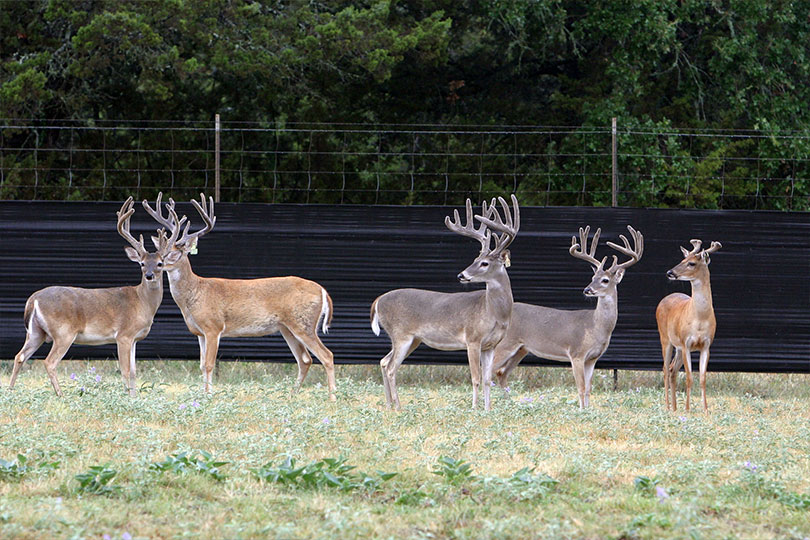By Jessica Domel
Multimedia Reporter
Eleven years after the first case of chronic wasting disease (CWD) was first found in Texas, the fatal, neurological deer disease continues to take a toll on hunters, landowners and the deer breeding industry.
Just two years ago, in September 2021, there were 980 deer breeders in Texas. Now, due to a number of factors, including the cost of testing herds for CWD and mandatory depopulation after CWD is found in a facility, there are only 683 breeders left in the state.
“It’s a very tough pill to swallow to know that 30% of your industry has decided it was better to get out of business than to keep rolling the dice,” John True, Texas Deer Association (TDA) former president, said in an interview with the Texas Farm Bureau Radio Network. “When you have an agency that rules in emergency orders, that’s no way to live.”
True spoke with the radio network after the Texas Parks and Wildlife Department (TPWD) issued an emergency order in late July requiring all breeder deer to be live tested for CWD, with a test result of “not detected,” before being transferred to another deer breeding facility or release site.
Kevin Davis, TDA executive director, said the association isn’t against the testing requirement, but is against the way the rules were implemented by emergency order.
“Unfortunately, it marks the second consecutive legislative session where a session had recently ended and TPWD declared emergency rules surrounding deer breeder regulations,” Davis said. “Unfortunately, what it looks like is TPWD is willing or wanting to circumvent the legislative process in order to enact rules.”
TPWD reports the rules were implemented to help control the spread of CWD and expedite and facilitate epidemiological investigations.
The emergency rules also prohibit the removal of identification tags from breeder deer.
“We can only sell deer to private ranches that are surrounded by an eight-foot fence,” True said. “So, the idea of ear tags has always been a personal preference for the private ranch owner. Some people want them in, some people don’t.”
The emergency order will remain in place for 120 days from passage in late July and may be extended an additional 60 days.
In addition to complying with those regulations, Texas deer breeders also face regulations that were implemented in 2021 requiring additional CWD testing.
“We have to test animals that die in our pens that are 12 months of age or older. If we miss a test, there’s a five-to-one antemortem, or live, test makeup requirement involved,” True said. “If a breeder has the fortune of not losing any deer that year, then in order to keep ‘movement qualified’ status, there’s a five-to-one make up. There’s constant surveillance on all deer breeders.”
The tests cost breeders $300 per sample.
Deer breeders must also test deer they intend to move to another site.
“In the last 18 months, I think we’ve tested close to 80,000 deer between live tests and post-mortem tests during that time frame,” True said. “The surveillance is 100%.”
If CWD is found in a deer breeding facility, the state requires the facility to be depopulated.
“It’s a death sentence if you have a positive on your farm,” True said.
Previously, the impacted deer breeders were charged for the depopulation of their facilities, but a bill passed by the Texas Legislature now requires the state to pay for the process.
In addition to testing 100% of their herds for the disease, Davis said Texas deer breeders are also working toward a genetic ability to map around CWD.
“If you remember, sheep farmers that were faced with scrapie genetically mapped around scrapie,” Davis said. “Now scrapie is relatively non-existent in the United States because of that program.”
The research is underway on a ranch in Uvalde County.
“There is no way to influence the spread of CWD outside of genetics,” Davis said. “It’s going to do its thing across the United States on its own, very slowly. The only way to influence it in a positive manner is through genetics. The only people who can do that is deer breeders.”

